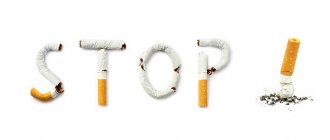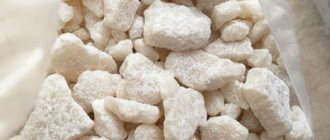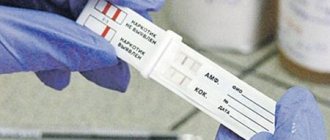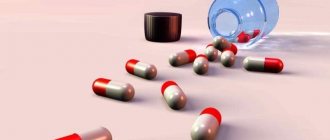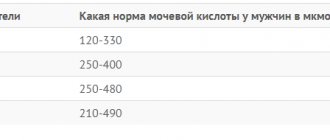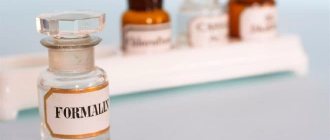The body's natural elimination processes are capable of removing drugs in their original form in minimal quantities. To restore health, body functions are not enough. The breakdown products of drugs linger inside the body for a long time, lining up in all metabolic processes, poisoning the organs. There are several ways to cleanse your blood of drugs in the shortest possible time; you can try to do this at home or in a hospital.
The degree of intoxication of the body after drug use depends directly on the type of substance, and not on its quantity.
Classification of drugs.
By origin:
- Synthetic - a product of the synthesis of chemical substances. Artificially created by man. As a rule, they cause the most destructive harm to the body. The most popular: LSD, amphetamine and ecstasy.
- Plant - found in nature. Made from herbs (marijuana), mushrooms (psilocybin), cacti (mescaline) and poppy juice (opiates, such as cocaine and opium).
They are also divided according to their mental effects:
- Heavy – quickly addictive (cocaine).
- Mild – Slowly addictive (marijuana)
How to speed up elimination from the body at home
It is impossible to completely remove substances after taking a drug in a short time. “Speed” settles in the tissues of the body for a long time. There are a number of recommendations to help reduce the concentration of decomposition products. Competent detoxification therapy is only possible when contacting specialists.
To increase the rate of elimination of harmful substances after taking a drug, it is recommended to use several methods together.
- Forced diuresis. The victim should drink plenty of fluids - 5.5-6 liters of purified water per day. Additionally, take diuretics and potassium. Potassium is necessary because the diuretic takes away the body's accumulation of this substance.
- Follow a proper diet. Food should be rich in protein, vitamins, and beneficial microelements. It is recommended to eat more fresh vegetables and fruits. The need for dairy products, cereals, cereals, nuts, and greens is increasing.
- Drink decoctions and tinctures containing medicinal plants. Chamomile, calendula, oak bark are plants that have detoxifying and anti-inflammatory effects.
- Physical therapy exercises, trips to the sauna and bathhouse improve the functionality of the body and speed up the metabolic process. Moderate physical activity increases sweat production. As a result, harmful breakdown products are eliminated faster through the skin pores.
Drugs taken orally are sometimes excreted in the feces. Drug metabolites can be eliminated along with bile. Drugs can also be eliminated through the lungs: this is why the breath of a person who has taken alcohol smells like alcohol. Finally, the drugs are eliminated through sweat.
John A. Solomses, Weld Cheburson Drugs and Society // OCR Palek, 1998
The harm of drugs
The question “how to remove drugs from the body” would not arise at all if it were not for the harm that drug addiction brings. Long-term abuse leads to the formation of mental and physical dependence – conditions when a person simply cannot exist without habitual doping. The digestive system takes a special hit: a person experiences nausea, diarrhea or frequent constipation. In some cases, there is low weight and undeveloped muscles. Problems with the liver appear, and disruptions to the reproductive system may occur (most often men are susceptible to this). There are mental problems, slow thinking, and headaches.
When taking a new dose, perception disturbances occur. In this case, the following may be noted:
- Intensification of feelings and vitality. Caused by stimulants. They temporarily increase mental activity, speed of information perception and muscle tone. Young students and competitive athletes suffer from taking such drugs (another name is doping). After the effect ends, the person feels extreme fatigue, which goes away after taking the next dose of stimulants. Thus, dependence arises;
- Decreased perception. Achieved by taking sedatives, usually used for medical purposes, as a sedative and analgesic.
- Selectivity. Caused by opiates. A person perceives some details vividly, while other sensations, thoughts or concerns fade into the background.
Recovery after cleansing
After detoxification, the patient needs rehabilitation.
His body is weakened not only by drug addiction. Family scandals, social problems, dismissal from work are the consequences of drug addiction. Narcologists prescribe antidepressants to such patients. The drugs Eglonil and Olanzapine cope well with depression and reduce aggression. Vitamin and mineral complexes are used during the rehabilitation period. Ascorbic acid improves immunity. B vitamins help restore the nervous system and stimulate the production of serotonin, the hormone of joy.
How to cleanse your body of drugs?
Drug withdrawal is a rather complex process. Once in the body, active substances and their breakdown products - toxins - remain in tissues for a long time. For example, amphetamines cannot be detected in blood, saliva and urine 4 days after use. However, a hair and nail test will show the content of this drug even after 3 months.
A person interested in how to remove drugs from the body should understand that this can only be done after completely stopping the use of psychotropic drugs. Otherwise, the procedure will have no effect.
There are many ways to cleanse the body:
- forcing diuresis and sweating;
- drug detoxification;
- enterosorption;
- efferent techniques.
Duration of drug levels in blood and urine
Having easily entered the human body, drugs do not leave tissues of various structures so quickly. Substances circulate through the bloodstream, accumulate in all organs, hair, and are excreted in the urine.
Cocaine
After the last sniff, the drug leaves the blood within 24–48 hours. As for urine, there will be no traces of cocaine left after 3-4 days. But it lasts in the hair for a full three months.
Marijuana
The active substance of marijuana circulates in the blood for at least 14 days. Cannabis lasts in urine for 1–4 weeks. Hair analysis for its content will be positive for 3 months. With long-term use, it lasts up to 1.5 years.
A product of cannabis is also hashish. Both drugs are made from the hemp plant, Cannabis sativa. Marijuana is produced from dried flowers, and hashish is a resin extracted chemically or mechanically.
These two substances have been present in the human biological environment longer than others.
Alcohol
The time it takes for alcohol to remain in the blood depends on the amount and strength of alcoholic beverages consumed.
A glass of vodka or 2 liters of beer in people weighing 60–70 kg “floats” in the blood for 14–16 hours. Alcohol metabolites are excreted in the urine for 3–5 days. Strong alcohol stays in urine longer. Traces of alcohol are detectable in hair within 90 days.
Heroin
Hard drugs are detected in the blood using test strips for 12 hours. Special tests detect antibodies to the drug in the blood serum for 4 months. Heroin is detected in urine for 3–4 days. The period of detection in hair remains the same as for the use of other drugs - 90 days.
LSD
The semisynthetic drug LSD is a hallucinogen that causes mental dependence. Sold in the form of small tablets. The lysergic acid in its composition disappears from the blood very quickly - after 2-3 hours no traces remain of it. It is excreted in the urine within 1–3 days. Hair analysis will give a negative result after 3 days.
Amphetamine
A heavy semi-synthetic drug, amphetamine, or methamphetamine, is an analogue of ephedrine. It is from this that the underground workers produce the drug at home. It has a hallucinogenic effect on the nervous system. Among drug addicts it is known as “ice”. Its crystals resemble snow.
After consumption, it is excreted in the urine within 1–3 days. It circulates in the blood for the same amount of time, but remains in the hair for 3 months.
Methamphetamine is detected in the urine for 3–6 days, and remains in the blood for 1–2 days.
Morphine
After consumption, morphine is detectable in the plasma for 6–8 hours. It can be detected in urine within 2–4 days. Hair retains the drug for 3 months.
Ecstasy or MDMA
The drug circulates in the blood for 24–48 hours. It can be detected in urine within 3-4 days. But experts will find it in the hair within 3 months.
Nicotine
Those who switch to a healthy lifestyle decide to quit the bad habit of smoking. A person needs to know how nicotine is eliminated from the body. After smoking a cigarette, the level of toxins is reduced by half every 2 hours. After 2–3 days, no nicotine remains in the blood or urine. But it will take a lot of time to completely remove the drug from the body after smoking.
Increasing diuresis and sweating
This type of cleaning can be done at home. It is effective for short-term use of weak drugs.
Drink at least 2-3 liters of fluid. This can be herbal teas, juices, plain water. After drinking 2 liters, take diuretics. This will speed up your metabolism and the release of toxins from the body. However, remember that there should be moderation in everything. Drinking too much water can be hard on your kidneys, so don't overdo it. A sauna, which increases sweating, also gives good results.
Factors affecting the rate of drug elimination
There are several conditions that can bring closer or delay the moment of complete cleansing:
- Type of drug: THC stays in the hair for up to 3 months, but LSD lasts only 3 days. However, most synthetic substances are more difficult to remove, such as salts.
- The amount of poison taken.
- Time since last use: if the drugs were taken recently, the trace will be bright.
- Body weight: some substances accumulate in the subcutaneous layer. After some time, it again enters the blood and then into the urine. A higher percentage of fat means a longer cleaning period.
- Emotional state and psychological stability.
- Speed of metabolic processes.
- The performance of the lymphatic, circulatory and excretory systems, as well as the condition of the liver.
- Age: The older a person is, the slower his metabolism works. This also includes gender - in men, metabolic processes proceed faster.
We can conclude that the body of a healthy young man with a strong physique gets rid of drug intoxication more intensively. However, the type of substance must be taken into account.
Medical detoxification
Don’t know how to remove a drug from your body, or want to get rid of it in a short time? Seek help from a narcologist! The doctor will select IVs for you with special detoxification solutions and a cocktail of drugs. Some of the medicinal substances used break down toxins, others bind them, others protect cells from the destructive effects of poisons, and others accelerate metabolic processes and the removal of decay products to the outside.
Such a complex effect, carried out over several days, gives the maximum possible effect.
What does metabolic therapy mean and why is it needed?
Metabolic treatment involves inhibiting the aging processes of neurons in a drug addict. Metabolic therapy involves prescribing to the patient:
- B vitamins, which stimulate regeneration;
- lemontar, which regulates energy metabolism in each neuron;
- piracetam, which increases blood circulation in the brain.
Metabolic therapy is started immediately after the patient is admitted to the hospital. Metabolic treatment is carried out simultaneously with detoxification of the body.
Efferent (hardware) techniques
Used exclusively in clinics. Most often used:
- plasmapheresis – hardware purification of blood plasma;
- UBOD – ultra-rapid opioid detoxification. It is relevant only in case of opiate addiction. During all manipulations, the person is under anesthesia; naltrexone or its analogues are used as an antidote.
Such procedures require large financial investments and cannot be performed on all patients.
Authorship and editing of the text:
Head of the Department of Psychiatry and Narcology of the Alkoklinik MC, psychiatrist-narcologist Popov A.G., psychiatrist-narcologist Serova L.A.
CAN'T FIND THE ANSWER?
Consult a specialist
Or call: +7 (495) 744-85-28
Call! We work around the clock!
Resocialization
Salt addicts quickly lose interest in work and hobbies, stop taking care of themselves and may not clean their house for weeks. Social connections are also lost: the old social circle becomes uninteresting, new drug addict friends appear.
Changes in behavioral reactions are also noted. Such people become aggressive and withdrawn, often suffering from apathy. Under the influence of drugs, they are capable of committing violence and other illegal actions.
After removing toxins and eliminating disturbances in the body, resocialization is carried out. Help a person:
- restore broken social connections;
- learn to live in society again;
- restore professional skills or gain a new profession:
- find non-drug ways to deal with stress;
- take up sports or find a hobby you like.
Resocialization is a long process and can take several years. It will help a person find himself again in a life without drugs, learn to think and make decisions freely, and be responsible for his actions. The more contact a former drug addict has with the outside world during resocialization, the higher the success of adaptation to new conditions of existence.
